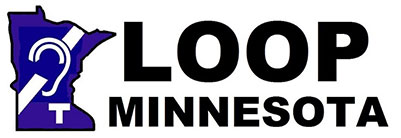Spread the word
Advocates speak in favor of a particular cause with the purpose to inform and to change behavior. In this case, the “cause” is equitable access to communication for the hard-of-hearing in loud, echoey places by means of hearing or induction loops.
Although nobody needs to be a “loop specialist”, it is important to be reasonably familiar with some basic facts of the technology. Also, a polite, non-confrontational approach makes people more willing to listen.
And so, how can people make an impact and convince decision makers that a hearing loop would be indeed a good investment for their places of worship, convention venues or business areas, such as information or customer service windows? Following are some tips that can be considered while making a case for loops.
- Personal Experience.
Describe in a few words how connecting hearing aids to loops by means of telecoils improves clarity of speech, fosters inclusion and improves quality of life. Make it your story. By now, just about every family has at least one relative who struggles with hearing loss. An emotional appeal can be quite effective.
2. Sound Demonstration
From your smartphone or laptop, share a YouTube to illustrate the difference between the un-looped and looped sound environments. Although there are others, here are two examples:
New York Subway station: https://www.youtube.com/watch?v=Ahbz0VvlZF0
Church readings: https://www.youtube.com/watch?v=XOKuf_Eu1J4
3. Basic explanation of how a loop & telecoil system works – if asked.
Note: The actual hearing loop is an electrical wire. Telecoils are wireless antennas in hearing instruments.
Sound from a speaker’s microphone activates the hearing loop wire. Telecoils in hearing instruments tap into the magnetic energy of the loop. The magnetic signals transfer wirelessly to the hearing instrument, which changes them back into audible sound. The audible signal is now clearer and stronger without any or minimal background noise.
Detailed explanations can be found at loopminnesota.org. People can also contact us for more information.
5. Know some of the advantages that loops provide
- Once installed, they are long-lasting and virtually maintenance-free
- Loops are invisible and discreet, which eliminates the risk of stigma attached to hearing loss
- Loops are user-friendly and easy to use
- Loops make businesses accessible to the hard-of-hearing. Advertise your loop!
- Hearing loops for service windows, check-out counters and information desks are becoming quite popular. 2-way communication systems tied in with a loop are available as kits. All-in-one portable devices are also popular. There are plenty of choices out there. These are some examples for starters.
6. What about disadvantages?
- The physical installation is often seen as an invasive drawback. Loops for larger areas – places of worship, libraries, convention halls or meeting rooms – are best installed during new construction or during venue refurbishments.
- Cost. This depends on the size of the loop and on the complexity of the design. It is best to have a certified loop contractor do an on-site inspection.
7. Gratitude and follow-up
- Thank people for their time and their willingness to listen.
- Ask if and when you can check back with them. Usually, other members or committees have to be consulted on the feasibility of the project. However, it is important to keep the channels open and the discussion going.
In the end,
It is up to those who are hard-of-hearing to advocate on their own behalf for equitable communication access by means of hearing loops. For now, loops and telecoil systems are the only and best bet for helping hard-of-hearing people understand speech clearly in large, loud and echoey places. So, spread the word on the communication advantages of hearing loops in the interest of inclusion and quality of life.
****
Note: Any links to websites or mention of products or technology are for information and illustration only. Loop Minnesota does not favor or endorse one brand, manufacturer or distributor over others.
****
Also visit my website hearing-loss-talk.com where I post blogs on all sorts of issues concerning hearing loss.




